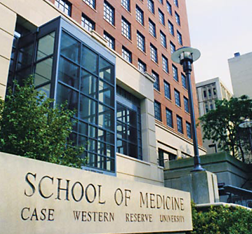New study published in the journal Dermatology and Therapy claims a compound derived from red grapes and found in red wine – resveratrol – may be an effective treatment for acne, particularly when combined with an already existing medication for the disorder.
Acne affects 40-50 million Americans, and around 85% of us develop acne at some point in our lives. The condition is characterized by pimples, blocked pores and/or cysts that can appear on the face, neck, chest, back, shoulders and upper arms.
Acne can be caused overproduction of oil in the skin, blockage of hair follicles from which the oil is released, and growth of bacteria called Propionibacterium acnes in the hair follicles.
There are medications that help treat acne, such as benzoyl peroxide – an oxidant that produces free radicals that kill P. acnes bacteria.
But the researchers of this latest study – including first author Dr. Emma Taylor of the division of dermatology at the David Geffen School of Medicine, the University of California-Los Angeles – note that this medication can sometimes cause skin irritation, such as redness, itching and peeling skin.
Past research has indicated that resveratrol – an antioxidant found naturally in red grapes that prevents free radicals from forming – may be effective against acne, but the mechanisms behind this have been unclear. Dr. Taylor and colleagues set out to investigate.
A ‘two-pronged attack’ on acne bacteria
The team applied resveratrol, benzoyl peroxide, and a combination of both compounds to colonies of P. acnesbacteria, and assessed their antibacterial effects for 10 days. They also cultured human skin cells and blood cells with the compounds.
They found that all concentrations of benzoyl peroxide were able to kill P. acnes, but this effect lasted no longer than 24 hours.
Resveratrol, however, appeared to kill P. acnes by weakening the outer membrane of the bacteria. Such effects lasted for 48 hours, although a concentration of at least 50 ug/mL was required.
But the team says they were surprised to find that the strongest effect against acne occurred when both resveratrol and benzoyl peroxide were combined. Not only did this combination kill bacteria at all concentrations, but the effects lasted longer.
“It was like combining the best of both worlds and offering a two-pronged attack on the bacteria,” says senior author Dr. Jenny Kim, also of the division of dermatology at the Geffen School.
Commenting on the findings, Dr. Taylor says:
“We initially thought that since actions of the two compounds are opposing, the combination should cancel the other out, but they didn’t.
This study demonstrates that combining an oxidant and an antioxidant may enhance each other and help sustain bacteria-fighting activity over a longer period of time.”
Potential for new acne treatments
From culturing human skin cells and blood cells with the compounds, the team also found that benzoyl peroxide had much higher toxicity than resveratrol, which may explain why benzoyl peroxide can cause skin irritation.
The researchers point out, however, that this toxicity reduced when both resveratrol and benzoyl peroxide were combined, indicating that both of the compounds together could treat acne more effectively but produce fewer side effects.
The findings, the researchers say, may even lead to new acne treatments. “We hope that our findings lead to a new class of acne therapies that center on antioxidants such as resveratrol,” says Dr. Taylor.
The researchers note that further research is warranted to better determine how the two compounds work together to kill acne bacteria, and their findings will need to be validated in patients with acne.
Medical News Today recently reported in a study presented at the 5th American Society for Microbiology Conference on Beneficial Microbes in Washington, DC, claiming a certain bacteria could help treat acne and other skin disorders.
A number of studies have also hailed resveratrol for other benefits. In 2012, MNT reported on a study claimingresveratrol has anti-aging properties, while researchers of a more recent study claim to have identified why resveratrol may prevent heart disease and cancer.
Written by Honor Whiteman
Copyright: Medical News Today
http://www.medicalnewstoday.com/articles/283406.php


